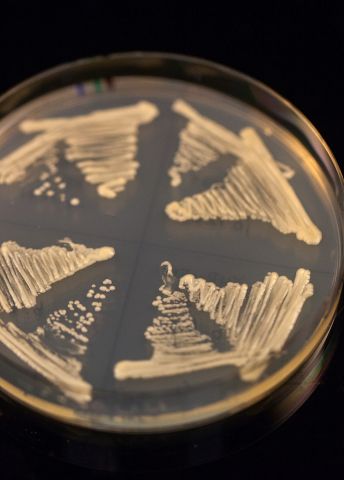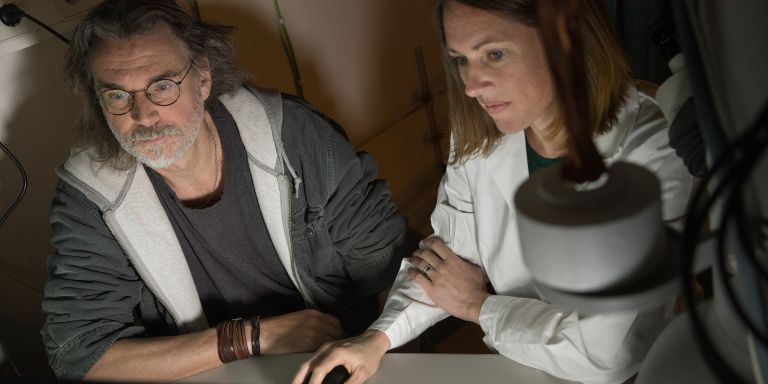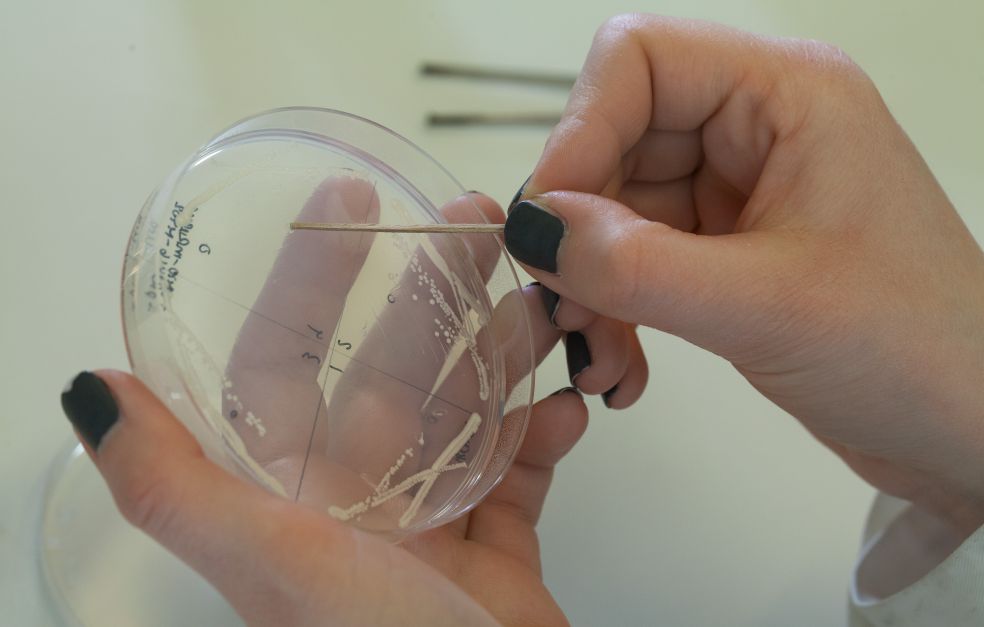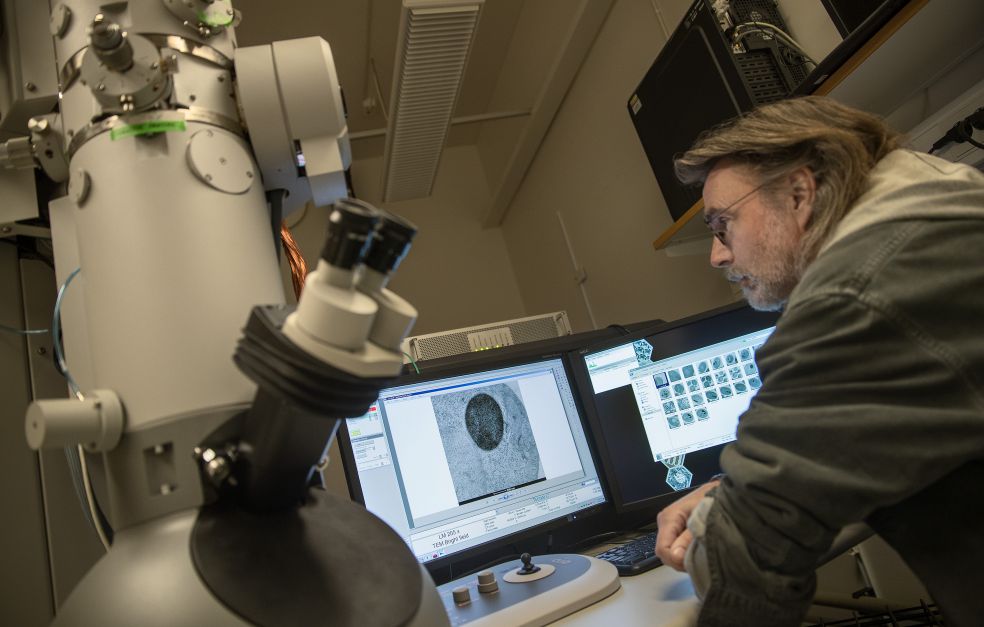
Project Grant 2017
Interconnected quality (IQ) control – role in organelle structure-function, ageing and longevity assurance
Principal investigator:
Thomas Nyström, Professor of Microbiology
Co-investigators:
University of Gothenburg
Johanna Höög
Stockholm University
Claes Andréasson
Sabrina Büttner
Martin Ott
Institution:
University of Gothenburg
Grant in SEK:
SEK 44.7 million over five years
What is ageing, really? In a biological sense it is the gradual breakdown of an organism. It sounds fairly simple, but there is much we do not know about ageing.
“The main question is what causes cells to degrade. We need to have a better understanding of cause and effect, and whether it’s possible to slow the process down,” says Thomas Nyström.
He is a professor at the Department of Microbiology and Immunology at the University of Gothenburg, and is heading a new project funded by the Knut and Alice Wallenberg Foundation, bringing together researchers at the universities in Gothenburg and Stockholm. Five research teams will be working together as they delve into the mysteries of how the different parts of cells communicate with each other to deal with damaged proteins. That communication does not appear to work properly in ageing cells.
Cell clean-up a critical defense
Proteins are essential for a multitude of processes within and outside the cell. An old cell contains far more damaged and defective proteins than a young one, which is one of the main reasons that cell function is impaired. But damaged proteins are not unique to old cells. Perhaps the most important difference between old and young cells is how they cope with defective proteins.
“And that is precisely the focal point of our research – how the cell deals with broken proteins. We call it ‘protein quality control’. There is an entire network of components in the cell that detect whether other proteins are wrongly folded and need help to fix the problem. If they can’t help, the network has to break down the proteins or get rid of them. It’s like a defense system, and it seems to be able to keep our proteins in good shape as long as we are young,” Nyström says.
He and his colleague are using yeast in their research. One might imagine that this is far removed from human beings, but the systems regulating ageing at molecular level are remarkably similar in many organisms.
Clumps of broken protein cause serious diseases
Two things can happen in a yeast cell with damaged proteins. First of all, damaged proteins do not work, which is not good, of course. But the proteins can also change shape and form aggregations with other broken proteins. This is what Nyström and his team believe harms the cell most of all. Protein clumps are the root cause of many serious diseases, such as Parkinson’s, Alzheimer’s and Huntington’s disease.
Research has already shown that protein regulation appears to require the parts of the cell – the organelles – to “talk to each other”. Several of them have a task in the regulatory system, but they also need to co-ordinate their efforts.
“In yeast it often begins with collapse of an organelle called the vacuole. When that stops working, the quality control performed by the mitochondria also ceases, and so on. We know that the organelles gradually degrade as a result of the communication between them – but we don’t know exactly how. We want to find out.”
Robots helping in the hunt for genes
The researchers are now trying to find genes involved in the communication. Their work is based on an enormous library of genetically modified yeast cells. Each cell has had a single gene switched off, and the cells are placed in a predetermined order on slides that can be scanned by automated microscopes. The researchers mark known steps in the chain of communication with fluorescent molecules, which show up as dots in functioning cells. Dark cells instead mean that the chain of communication has been broken, which in turn means that the gene that has been turned off performed a function.
“This would take an interminable amount of time using standard genetics. We are completely dependent on robots, which can scan the library incredibly quickly,” Nyström explains.
When the researchers have found the important genes, they want to study their function in ageing cells, to see which parts of the system stop working first, and which ones endure. The next step will be to see whether the communication systems can be saved by controlling the quality control mechanism, thereby prolonging life, or at least postponing age-related problems.
A hard choice
Trying to arrest the ageing process might sound like alchemy or science fiction. And this was exactly the general perception of research into ageing until just a few decades ago. But today it is a broad and dynamic field.
“Obviously, it’s interesting to know whether we can live much longer than we already do. But it’s more important to find a cure for diseases that break down cells at an abnormal rate, such as Parkinson’s and Alzheimer’s,” Nyström comments.
He thinks it is really exciting to have researchers with different specialties approaching the same problem from different angles. Researchers in Gothenburg are studying the form of the ageing yeast cell using high-resolution electron microscopy, and are looking for important genes. Their colleagues in Stockholm are studying the protein that the genes code for, and ascertaining exactly what the proteins do in the cell.
“One difficult aspect of all genetics is choosing what is most important. We often find too many genes that we want to examine. If we find a hundred, we can’t analyze all of them. In that case we need to figure out further experiments to serve as a filter so we can identify the genes that are most relevant for protein quality control or for ageing. We’re not sure yet how we’re going to do it. But we have some ideas…”
Text Lisa Kirsebom
Translation Maxwell Arding
Photo Magnus Bergström





